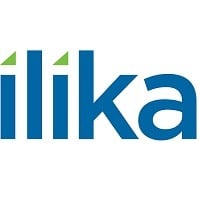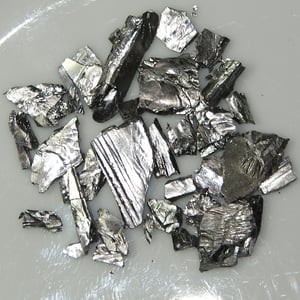Ilika plc (LON:IKA) Chief Executive Officer Graeme Purdy caught up with DirectorsTalk for an exclusive interview to discuss their update on trading, Stereax manufacturing & Goliath development, the lack of contracts and the interest in Goliath.
Q1: You’ve provided updates on trading, Stereax manufacturing and Goliath product development this week but I noticed the markets didn’t respond very favourably. It appears that the market have reacted but I think one of the concerns is the weighting now to medical devices where commercial sales set to commence at the end of H2 2023. Do you have any thought or comments on this?
A1: Yes, so that’s correct that unfortunately the market didn’t respond positively to our trading update. Indeed, one of the dynamics for our Stereax business is that we’re seeing more market pulled towards medical devices and the reason for that actually is that there’s a really good fit between the Stereax product and some of the market opportunities that we see in miniature medical implants, where we’re able to provide a very safe and reliable battery solution for some applications that other types of batteries are not suitable for.
This whole miniaturisation capability that we’ve got with Stereax is a very attractive benefit for the applications that include things like neuro stimulation and pressure sensors within the body. Also, orthopaedic implants where you essentially put the cells into very small devices which are part of say a hip or a knee replacement and increasingly applications that include ophthalmic deployments, which is where you put the cells on the surface of a contact lens for enhanced vision.
So, I think the concern probably is the relatively long approval time for medical devices, typically it takes 3-5 years to get a medical device to market.
The reassurance that I would give to investors is that actually our sales don’t have to wait till the end of that approval process. We have actually already been selling evaluation samples from our pilot line for a couple of years to customers in this sector to allow them to validate the technology and there are series of stages that customers have to go through in order to get their own devices approved for these applications.
So, they start with prototype development then they go into pre-clinical trials and then clinical trials and then of course you get FDA approval or regulatory approval, depending on whereabouts in the world you are and you are able to address the mass market.
We’re able to sell our product to customers that are going through these different stages and the quantities gradually ramp up. We have a portfolio of customers that we’re interacting with and when you aggregate the demand, we can match the supply from our facility to that demand as it ramps towards the mass market.
Q2: Now another concern, and I think you kind of touched on, this is the lack of contracts. Is this something that we can expect to change anytime soon?
A2: The commercial interactions that we’ve got are for Stereax, largely conditional contracts, so they are dependent on us being able to deliver the product, obviously, and we are in the process right now of product qualification, which will take us, as we said in the RNS, until the end of this calendar.
As we get closer to the end of this calendar, we expect actually that the materiality of those contracts will gradually increase and we expect to be able to announce some of them to the market. That’s not to say actually that we have to wait that long, in fact, we have some interactions in the coming months that could mature into broader collaborations, more substantial collaborations, and again, that should give investors for the comfort.
Q3: On the Goliath side, you mentioned that the company continues to explore opportunities for closer collaboration with strategic partners. What can you tell us about the interest that Ilika is getting for Goliath and is now the right time? Or would it be better to complete the scale up and then look to spin or sell that part of the business?
A3: These are interesting strategic issue that get a lot of airtime at Board level in the company and we’re constantly reviewing our options here.
Goliath, of course, is a large format EV pouch cell so is designed for electric vehicles. We have always actually had a collaborative approach to the development of this technology. When we were at the lower TRLs we were grant-supported by the Faraday Battery Challenge and worked together with Honda, here in Europe, McLaren, for performance vehicles and Jaguar Land Rover for assessing the scale up and mass market commercialisation economics of solid state Goliath cells, as well as working with Ricardo, a well-known tier one in the sector.
Those collaborations have been very instructive in helping us design our pouch cell technology to meet the needs of the market. We are continuing to have dialogue with those partners as well as others and expect actually to be able to announce further collaborations in the sector, which will probably mature. In fact, we expect to be able to talk about how we are partnering for scale up through the next phase to our mega factory scale.
We’ve explained to shareholders previously about how last year when we did the placing of about £25 million, that was mainly to raise money for the automation of our pilot line, which we are implementing at the moment. The next scale up phase will be to go to a mega factory scale and we’ll do that together, in partnership with one or more OEMs in an ideal world, and then ultimately once the processes has stabilised at mega factory scale, when we get to Gigafactory scale, that will be through licensing or joint venturing.
So, collaboration and partnering is very much part of the commercial roadmap that we anticipate for Goliath.











































